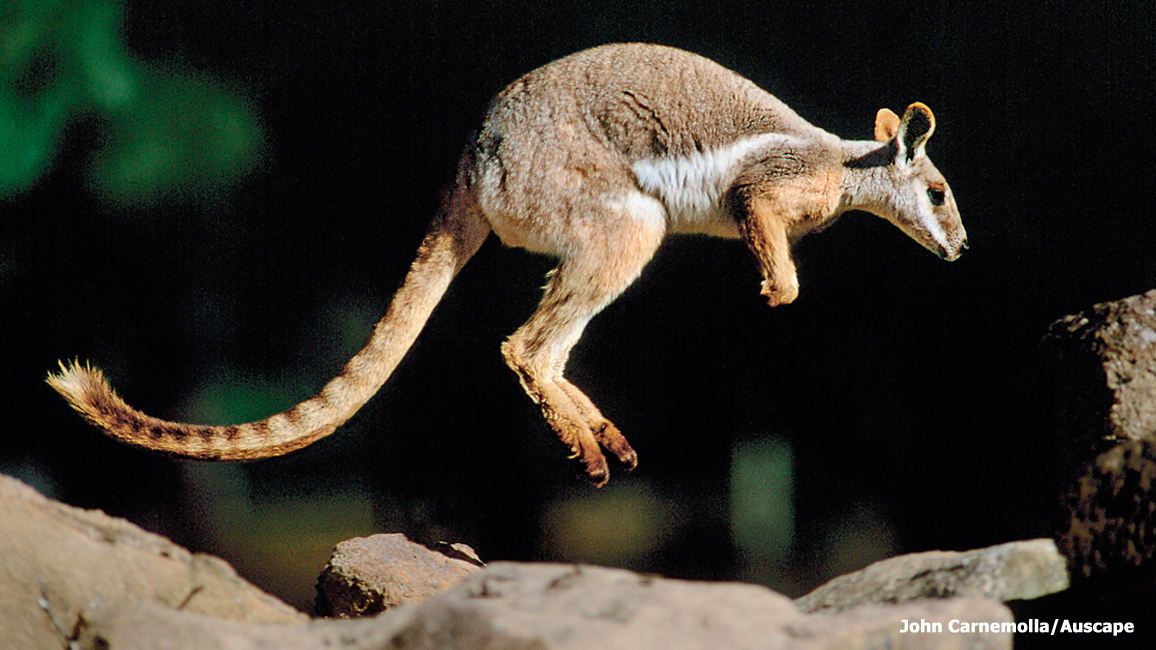
Postcards from Australia
By Scarlett Fox, with help from Hannah Schardt
Dear Rick,
G’day from topsy-turvy Australia! It might be late fall back home, but down here it’s almost summer. (Australia is in the Southern Hemisphere, so seasons here are the opposite of ours in the United States.) Seasons aren’t the only things that are different Down Under. I’ve never met so many strange animals in my life.
There are mammals that lay eggs! Birds that are taller than humans! And it seems that everywhere I turn, there’s an animal with a dangerous bite. Naturally, I LOVE it here! Can’t wait to show you all the photos I’ve taken of my new Aussie friends. More later—time to head back to the Outback! (That’s the dry, wild middle of the country.)
Wish you were here,
Scarlett

G’Day, Zelda!
Australia is full of your cousins—marsupials! As you know, marsupials (mar-SOO-pee-ulz) give birth to tiny, helpless babies. Most have pouches for carrying their babies until they are old enough to follow Mom around. Opossums like you are the only marsupials in the United States. But Australia has more than 150 kinds!
Love, Scarlett
A numbat is only as big as a squirrel. But it eats as many as 20,000 termites a day. Its long tongue and sticky spit are just right for slurping up the ant-like insects.
A Tasmanian devil makes a loud, growly scream when it feels threatened. It’s the size of a miniature poodle, but it can catch prey as large as a small kangaroo.
HEAR IT: LISTEN TO A TASMANIAN DEVIL!
The cat-sized spotted-tailed quoll is the largest meat-eating marsupial in mainland Australia. (The Tasmanian devil is bigger but lives on only one island.) The quoll is happiest in Australia’s rainforests, where there are plenty of trees to climb and insects, birds, and snakes to hunt.
Like its kangaroo cousins, this yellow-footed rock wallaby hops from place to place. Its long, striped tail helps it keep its balance in steep, rocky places where other animals would struggle to get around.

Dear Rick,
Did you know that most of the animals in Australia’s oceans are found nowhere else on Earth? The rivers and streams here are also packed with amazing critters. Just today, I got nose-to-bill with a platypus. I’m just glad it wasn’t a crocodile!
More soon,
Scarlett
These guys may look fierce. But Australia’s freshwater crocodiles are smaller and calmer than the more famous saltwater crocs. A “freshie” spends its days lounging in an inland creek or river. But when a tasty fish swims by—snap! The croc’s bite is lightning fast.
The blue-ringed octopus is smaller than a grownup’s hand. But it is one of the deadliest animals in the sea. When it flashes its bright blue rings, watch out! It may bite—and its little body holds enough venom to kill 10 people.
This weedy sea dragon looks showy up close. But from a distance, those “weedy” bits along its back and tail look just like pieces of kelp. So this seahorse relative blends right in with the waving seaweed around it.
With the body of a beaver and the bill and feet of a duck, the platypus is an animal oddball. It’s a mammal—but the female platypus lays eggs. And the male has sharp points tipped with poison above his back feet!

Hey, Boom,
I saw an echidna today! It was really cute, but you wouldn’t want to give it a hug. Here’s a joke for you: What did the echidna say to the cactus? Answer: Are you my mother? I can’t believe I’m going home tomorrow. I’ll really miss this place. Australia is weird and wonderful—just like you!
Love,
Scarlett
Over 2,000 species of grasshoppers live in Australia, but the Leichhardt’s grasshopper must be the most beautiful. It doesn’t get around much, though. It lives its whole life on a single plant, working its way higher and higher as it snacks on the leaves.
The laughing kookaburra is known for its call, which sounds like a cackling laugh. The kookaburra is so popular in Australia that it was picked as a mascot for the Olympics held here in the year 2000.
HEAR IT: LISTEN TO A KOOKABURRA!
When a frilled lizard is relaxed, the flaps of skin around its face just hang loosely. But when it’s scared, the frills pop open like a sideways umbrella. That makes the lizard look bigger and scarier. If that doesn’t work, the lizard turns tail and races for the nearest tree.
If the platypus isn’t strange enough for you, meet the echidna (ih-KID-nuh). Like the platypus, it seems to be a mish-mash of other animals: Like a bird, it lays eggs. Like a koala, it has a pouch for its babies. And like a hedgehog, it has sharp spines on most of its body. When it spots a threat such as a dingo, the echidna uses sharp claws to dig a shallow hole for its soft underside. Only its sharp prickles stay exposed. That dingo may decide to have something else for dinner!
















